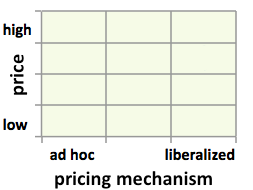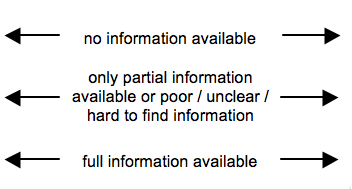Knowledge fuels change - Support energypedia!
For over 10 years, energypedia has been connecting energy experts around the world — helping them share knowledge, learn from each other, and accelerate the global energy transition.
Today, we ask for your support to keep this platform free and accessible to all.
Even a small contribution makes a big difference! If just 10–20% of our 60,000+ monthly visitors donated the equivalent of a cup of coffee — €5 — Energypedia would be fully funded for a whole year.
Is the knowledge you’ve gained through Energypedia this year worth €5 or more?
Your donation keeps the platform running, helps us create new knowledge products, and contributes directly to achieving SDG 7.
Thank you for your support, your donation, big or small, truly matters!
Difference between revisions of "Fuel Prices Jordan"
***** (***** | *****) m (1 revision) |
***** (***** | *****) m |
||
| (4 intermediate revisions by 3 users not shown) | |||
| Line 1: | Line 1: | ||
{{Fuel Price Factsheet | {{Fuel Price Factsheet | ||
|Fuel Price Country=Jordan | |Fuel Price Country=Jordan | ||
| + | |Fuel Pricing Policies="Pricing policy: Government controls fuel prices. Government removed subsidies from all fuels except LPG in Feb 2008 and adopted a monthly price adjustment mechanism, but stopped adjusting prices (of gasoline, diesel, and kerosene) in Jan 2011. Gasoline, kerosene, and diesel prices were raised in Dec 2010, but lowered in Jan 2011 in response to the events in Tunisia and elsewhere in the region. An expert panel formed by the prime minister in May 2011 recommended smart cards for subsidized goods instead of price subsidies. The kerosene and diesel prices remained unchanged, except for a brief rise in Sep 2012. Until Nov 2012, the price of LPG sold in 12.5-kg cylinders had remained frozen for years, except for four weeks in early 2009 when the price was lowered slightly. In May 2012, Jordan raised the price of 95 RON gasoline to JD 1 (US$1.41)/liter from JD 0.795 (US$1.12), and substantially raised electricity tariffs for major industrial and service sectors. In Nov 2012, unable to shoulder the growing budget deficit, government increased the price of LPG in 12.5-kg cylinders by 54% and kerosene and diesel prices by 33%. Government began making monthly adjustments in Dec 2012 for all fuels except LPG. The price of diesel for non-power users and average monthly benchmark FOB price relevant to Jordan since 2008 are shown below. For a period of time, the retail price was lower than the FOB price, signaling a large subsidy. | ||
| + | |||
| + | Protests: The prices of 90 RON gasoline and diesel were increased in Sep 2012 but reversed within two days following street protests. The price increases in Nov 2012 were met with nation-wide protests, turning violent in some areas, killing one person, injuring 71, and quickly escalating into calls for a change of government. Government, however, did not roll back price increases. Consequences of subsidies: The fuel subsidies since 2005 have fluctuated. | ||
| + | |||
| + | Information: Jordan Petroleum Refinery Company, a national oil company and Jordan’s sole refiner, posts current and historical fuel prices since 2008 on its Web site." | ||
| + | |||
| + | |||
| + | (Source: Kojima, Masami. (2013, forthcoming). “Petroleum product pricing and complementary policies:Experience of 65 developing countries since 2009.” Washington DC: World Bank.) | ||
|Fuel Currency=JOD | |Fuel Currency=JOD | ||
|Fuel Price Exchange Rate=0.703 | |Fuel Price Exchange Rate=0.703 | ||
|Fuel Price Exchange Rate Date=2010/11/26 | |Fuel Price Exchange Rate Date=2010/11/26 | ||
| − | |||
| − | |||
|Fuel Price Composition Annotation=No information available. | |Fuel Price Composition Annotation=No information available. | ||
| − | |Fuel Pricing | + | |Fuel Matrix Pricing Mechanism=2 |
| − | |||
| − | |||
| − | |||
|Fuel Matrix Price Level=3 | |Fuel Matrix Price Level=3 | ||
| − | |||
|Fuel Matrix Annotation=No information available on the specification of the pricing formula applied. | |Fuel Matrix Annotation=No information available on the specification of the pricing formula applied. | ||
|Fuel Transparency Price Composition=1 | |Fuel Transparency Price Composition=1 | ||
| Line 25: | Line 27: | ||
|Fuel Price Factsheet Source Link=http://204.180.229.21/external/pubs/ft/wp/2006/wp06247.pdf | |Fuel Price Factsheet Source Link=http://204.180.229.21/external/pubs/ft/wp/2006/wp06247.pdf | ||
}} | }} | ||
| + | |||
| + | [[Category:Jordan]] | ||
| + | [[Category:Jordan]] | ||
Latest revision as of 13:35, 12 March 2015
Part of: GIZ International Fuel Price database
Also see: Jordan Energy Situation
Fuel Pricing Policies
| Local Currency: | JOD |
| Exchange Rate: | 0.703
|
| Last Update: |
"Pricing policy: Government controls fuel prices. Government removed subsidies from all fuels except LPG in Feb 2008 and adopted a monthly price adjustment mechanism, but stopped adjusting prices (of gasoline, diesel, and kerosene) in Jan 2011. Gasoline, kerosene, and diesel prices were raised in Dec 2010, but lowered in Jan 2011 in response to the events in Tunisia and elsewhere in the region. An expert panel formed by the prime minister in May 2011 recommended smart cards for subsidized goods instead of price subsidies. The kerosene and diesel prices remained unchanged, except for a brief rise in Sep 2012. Until Nov 2012, the price of LPG sold in 12.5-kg cylinders had remained frozen for years, except for four weeks in early 2009 when the price was lowered slightly. In May 2012, Jordan raised the price of 95 RON gasoline to JD 1 (US$1.41)/liter from JD 0.795 (US$1.12), and substantially raised electricity tariffs for major industrial and service sectors. In Nov 2012, unable to shoulder the growing budget deficit, government increased the price of LPG in 12.5-kg cylinders by 54% and kerosene and diesel prices by 33%. Government began making monthly adjustments in Dec 2012 for all fuels except LPG. The price of diesel for non-power users and average monthly benchmark FOB price relevant to Jordan since 2008 are shown below. For a period of time, the retail price was lower than the FOB price, signaling a large subsidy.
Protests: The prices of 90 RON gasoline and diesel were increased in Sep 2012 but reversed within two days following street protests. The price increases in Nov 2012 were met with nation-wide protests, turning violent in some areas, killing one person, injuring 71, and quickly escalating into calls for a change of government. Government, however, did not roll back price increases. Consequences of subsidies: The fuel subsidies since 2005 have fluctuated.
Information: Jordan Petroleum Refinery Company, a national oil company and Jordan’s sole refiner, posts current and historical fuel prices since 2008 on its Web site."
(Source: Kojima, Masami. (2013, forthcoming). “Petroleum product pricing and complementary policies:Experience of 65 developing countries since 2009.” Washington DC: World Bank.)
Fuel Prices and Trends
| Gasoline 95 Octane | Diesel | |
|---|---|---|
| in USD* |
|
|
| in Local Currency |
|
|
* benchmark lines: green=US price; grey=price in Spain; red=price of Crude Oil
Fuel Price Composition
Price composition.
No information available.
At a Glance
| Regulation-Price-Matrix |
| ||||
 |

|

|

| ||
No information available on the specification of the pricing formula applied.
Sources to the Public
| Type of Information | Web-Link / Source |
|---|---|
| Other Information | http://204.180.229.21/external/pubs/ft/wp/2006/wp06247.pdf |
| Pump prices and margins | http://www.memr.gov.jo/Default.aspx |
Contact
Please find more information on GIZ International Fuel Price Database and http://www.giz.de/fuelprices
The following coordinate was not recognized: {{#geocode: Jordan|google }}.



















